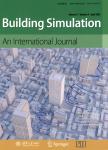Impacts of uneven surface heating of an ideal street canyon on airflows and indoor ventilation:Numerical study using OpenFOAM coupled with EnergyPlus
作者机构:School of Architecture and Urban PlanningHuazhong University of Science and TechnologyWuhanHubei430000China
出 版 物:《Building Simulation》 (建筑模拟(英文))
年 卷 期:2022年第15卷第2期
页 面:265-280页
核心收录:
学科分类:08[工学] 0807[工学-动力工程及工程热物理] 0813[工学-建筑学] 0814[工学-土木工程] 081301[工学-建筑历史与理论]
基 金:supported by the National Natural Science Foundation of China(No.51778251).
主 题:uneven surface temperature indoor ventilation urban canyon OpenFOAM EnergyPlus
摘 要:In the daytime,building facades and ground surfaces are heated by solar radiation,and the resulting buoyancy can change the flow field inside street canyons.In this study,the impacts of uneven and time-varying heating of surfaces inside an ideal urban street canyon(aspect ratio=1)on single-sided indoor natural ventilation are analyzed.This work introduces a methodology for a numerical approach based on the coupling between a computational fluid dynamics(CFD)model and an energy balance model.First,EnergyPlus is employed to calculate the time-varying and uneven surface heating.Simulations are performed at four typical study times(05:00,09:00,15:00,20:00)during a hot summer day(July 15)in Wuhan,China.Second,the surface temperature results are transferred to OpenFOAM for CFD simulation.Two inlet wind velocities(U_(ref))are investigated.The results show that for a relatively strong ambient wind(U_(ref)=3 m/s),the buoyancy caused by surface heating does not significantly change the airflow structures and indoor ventilation compared with those in the isothermal case.However,for a weak ambient wind(U_(ref)=0.5 m/s),the airflow structures inside the street canyon vary with the time of day.Moreover,the average air exchange rate(ACH)differs by-25.0% to 15.9%compared with that in the isothermal case,and the ACH of a single room increases by up to 2710%.The results indicate that the surface-heating-induced buoyancy is nonnegligible and should be carefully investigated,especially for weak ambient winds.



